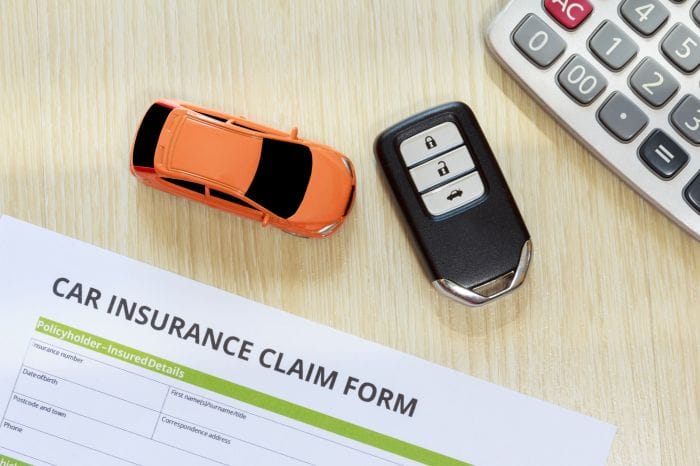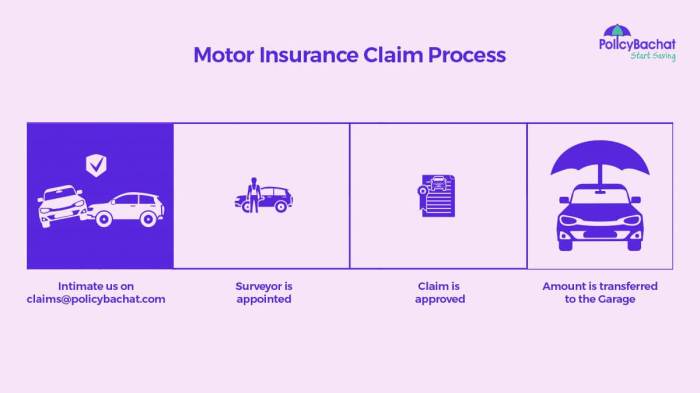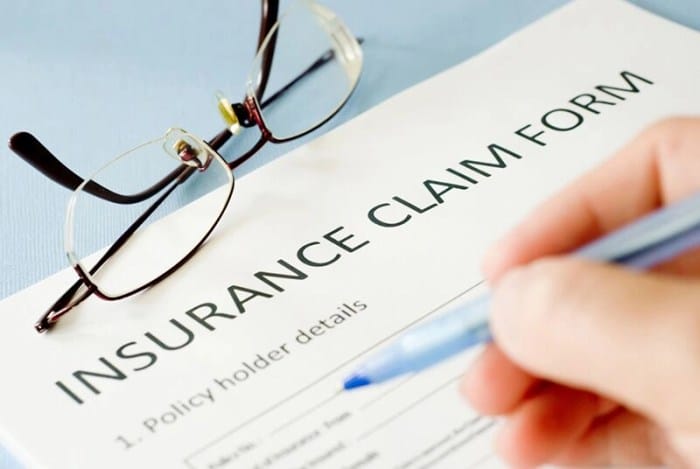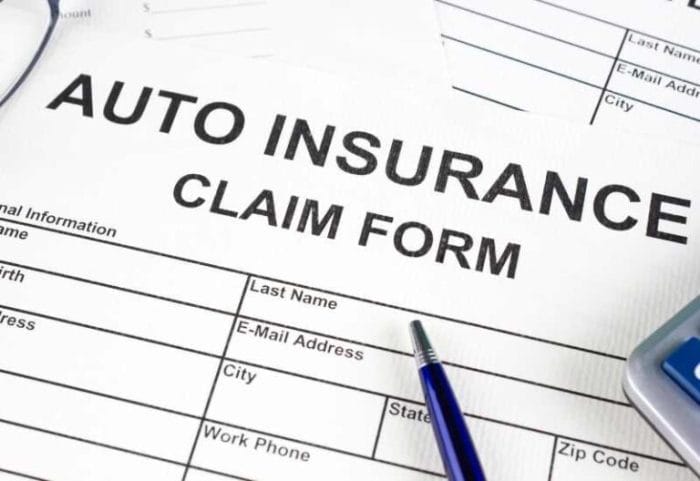In the aftermath of an unfortunate car accident, filing an auto insurance claim can be a daunting task. Amidst the distress and inconvenience, understanding the process and following the right steps can ensure a smooth and successful claim experience. This comprehensive guide provides practical tips and insights to help you navigate the complexities of filing an auto insurance claim.
From gathering essential information to documenting the accident, communicating effectively with your insurance company, and understanding your coverage and benefits, we’ll cover everything you need to know. Whether you’re a seasoned driver or a first-time claimant, this guide will empower you to protect your rights and ensure a fair settlement.
Gather Information
Before filing an auto insurance claim, it’s essential to gather all relevant personal and policy details to ensure a smooth and efficient claims process.
Accuracy and completeness of the information provided are crucial to avoid delays or complications during the claim settlement.
Required Documents and Information:
- Policy Number: Find your auto insurance policy number, typically located on your insurance card or policy document.
- Accident Report: If there was an accident, obtain a copy of the police or accident report, if available.
- Contact Details: Have the names, addresses, and phone numbers of all parties involved in the accident, including witnesses, if applicable.
- Vehicle Information: Provide details of the insured vehicle, including the make, model, year, license plate number, and VIN.
- Damage Assessment: Take clear photos of the vehicle damage, including close-ups of any specific areas of concern.
- Medical Information: If there were injuries, provide medical records, bills, and contact information for healthcare providers.
- Property Damage: If there was damage to property other than the vehicle, gather photos, receipts, or estimates for repairs or replacements.
Notify Your Insurance Company

In the event of an accident, it is crucial to promptly notify your insurance company to initiate the claims process and receive necessary assistance.
There are several convenient methods to contact your insurance company:
Phone Call
Calling your insurance company’s dedicated claims hotline is a straightforward and efficient way to report an accident. Be prepared to provide essential information such as your policy number, the date and location of the accident, and details about the incident.
Online Portal
Many insurance companies offer online portals that allow you to file a claim electronically. Log in to your account, navigate to the claims section, and follow the instructions to submit your claim details and supporting documents.
Mobile App
If your insurance company has a mobile app, you can use it to report an accident remotely. Simply download the app, sign in, and follow the prompts to file a claim. Mobile apps often include features like photo upload and GPS location tracking to facilitate the claims process.
Regardless of the method you choose, ensure you provide accurate and detailed information to the insurance representative. Clearly explain the circumstances of the accident, including the date, time, location, and parties involved. If possible, take photos of the accident scene and any visible damage to your vehicle.
Obtain Police Report

In the unfortunate event of an accident involving injuries or substantial property damage, obtaining a police report is crucial. It serves as an official documentation of the incident, providing valuable information to support your insurance claim.
Requesting a Copy of the Police Report
1. Contact the Local Law Enforcement Agency
Visit the police station nearest to the accident scene or contact them via phone.
Provide essential details, including the date, time, and location of the accident.
Inquire about the availability of the police report and the process for obtaining a copy.
2. Submit a Request Form
Some jurisdictions may require you to fill out a request form for the police report.
Provide accurate and complete information, including your contact details and the case number (if available).
3. Pay Any Applicable Fees
There might be a nominal fee associated with obtaining a copy of the police report.
Be prepared to pay the fee at the time of your request.
Significance of the Police Report
1. Official Documentation
The police report serves as an official record of the accident, providing a detailed account of the events.
2. Supporting Evidence
The report contains valuable information such as witness statements, diagrams, and photographs.
These details can help substantiate your insurance claim and strengthen your case.
3. Liability Determination
The police report may provide insights into who was at fault for the accident.
This information can be crucial in determining liability and assigning responsibility.
4. Legal Proceedings
In case of disputes or legal proceedings, the police report can serve as evidence to support your claim.
Assess Vehicle Damage

Accurately assessing the extent of vehicle damage is crucial for a successful insurance claim. Involving a qualified mechanic or body shop for a thorough inspection ensures a detailed and professional evaluation of the damage.
Choosing a Reputable Repair Facility
- Seek recommendations from trusted sources, such as friends, family, or online reviews.
- Verify the repair facility’s credentials, including licenses, certifications, and affiliations with reputable organizations.
- Inquire about their experience with similar vehicle damage and their warranty policies.
Obtaining a Detailed Repair Estimate
- Request a written estimate that includes a detailed breakdown of labor costs, parts, and materials.
- Ensure the estimate specifies the necessary repairs to restore the vehicle to its pre-accident condition.
- Compare estimates from multiple repair facilities to ensure a fair and competitive price.
Role of the Repair Estimate in the Insurance Claim Process
- The repair estimate serves as a basis for the insurance company to assess the extent of damage and determine the appropriate compensation.
- It helps in negotiating a fair settlement amount with the insurance company.
- The repair estimate also assists in scheduling repairs and monitoring the progress of the restoration work.
File Your Claim
Filing an auto insurance claim involves several steps to ensure a smooth and efficient process. Accuracy and thoroughness are crucial to ensure that your claim is handled promptly and fairly.
To initiate the claim filing process, you’ll need to contact your insurance company and provide them with the necessary information. This typically includes details about the accident, such as the date, time, and location, as well as information about the other driver involved, if applicable.
Complete Claim Forms
Your insurance company will provide you with claim forms that you’ll need to complete and submit. These forms typically request information about the accident, the damage to your vehicle, and any injuries sustained. Be sure to provide accurate and detailed information on the claim form, as this will help the insurance adjuster assess your claim and determine the amount of coverage you’re entitled to.
Gather Supporting Documentation
In addition to completing the claim forms, you’ll also need to gather supporting documentation to support your claim. This may include photographs of the accident scene and damage to your vehicle, a copy of the police report (if one was filed), and medical records if you or any passengers sustained injuries.
Submit Your Claim
Once you have completed the claim forms and gathered the necessary supporting documentation, you can submit your claim to your insurance company. This can be done online, by mail, or by visiting your insurance company’s local office.
Review and Processing of Claim
Once your claim is submitted, it will be assigned to an insurance adjuster who will review the information you provided and determine the amount of coverage you’re entitled to. The insurance adjuster may contact you for additional information or to schedule an inspection of your vehicle.
Follow Up and Communication

Maintaining open communication with your insurance company throughout the claims process is crucial for a smooth and successful resolution. Effective communication helps ensure that your claim is processed efficiently, any issues or disputes are resolved promptly, and you receive a fair settlement.
Here are some tips for effectively communicating with your insurance adjuster and ensuring timely resolution of your claim:
Be Clear and Concise
- When communicating with your insurance adjuster, be clear and concise in your explanations. Provide all relevant information, but avoid unnecessary details that may confuse or sidetrack the discussion.
- Use language that is easy to understand and avoid technical jargon or insurance-specific terms that the adjuster may not be familiar with.
Be Responsive
- Respond promptly to any requests for information or documentation from your insurance adjuster. Delays in providing the necessary information can slow down the claims process and may result in delays in the settlement.
- Keep track of all communication with your insurance company, including phone calls, emails, and letters. This will help you stay organized and ensure that all relevant information is documented.
Be Patient and Persistent
- The claims process can sometimes be lengthy and may involve multiple steps. Be patient and persistent in following up on your claim and ensuring that it is moving forward.
- If you have any questions or concerns, do not hesitate to contact your insurance adjuster for clarification or assistance.
Document Everything
- Keep a record of all communication with your insurance company, including phone calls, emails, and letters. This will help you track the progress of your claim and provide evidence if any disputes arise.
- Take photos of the damage to your vehicle and any other relevant evidence that may support your claim.
Be Prepared for Negotiations
- In some cases, you may need to negotiate with your insurance company to reach a fair settlement for your claim. Be prepared to provide evidence and documentation to support your position.
- If you are unable to reach an agreement with your insurance company, you may need to consider filing a complaint with the state insurance department or pursuing legal action.
Understand Coverage and Benefits

Before filing an auto insurance claim, it’s essential to have a thorough understanding of your policy’s coverage and benefits. This knowledge empowers you to make informed decisions throughout the claims process and ensures you receive the appropriate compensation for your losses.
Auto insurance policies typically include a combination of coverage types, each designed to protect you from specific types of financial losses. Common coverage types include:
Collision Coverage
- Provides coverage for damages to your vehicle resulting from a collision with another object, such as another vehicle, a tree, or a guardrail.
- Collision coverage is typically subject to a deductible, which is the amount you pay out of pocket before your insurance coverage kicks in.
Comprehensive Coverage
- Covers damages to your vehicle caused by events other than collisions, such as theft, vandalism, fire, hail, and natural disasters.
- Like collision coverage, comprehensive coverage also has a deductible.
Liability Coverage
- Protects you from financial responsibility if you cause an accident that results in injuries or property damage to others.
- Liability coverage typically includes bodily injury liability and property damage liability.
In addition to these basic coverage types, you may also have optional coverages available, such as:
- Medical payments coverage: Covers medical expenses for you and your passengers, regardless of who is at fault for the accident.
- Uninsured/underinsured motorist coverage: Protects you from financial losses if you’re involved in an accident with a driver who doesn’t have insurance or doesn’t have enough insurance to cover your damages.
Deductibles and Limits
When filing an auto insurance claim, it’s important to understand the role of deductibles and limits in determining the amount of coverage available to you.
A deductible is the amount you pay out of pocket before your insurance coverage kicks in. The higher your deductible, the lower your insurance premiums will be. However, a higher deductible also means you’ll have to pay more out of pocket if you need to file a claim.
Coverage limits are the maximum amount your insurance company will pay for a covered loss. Coverage limits can vary depending on the type of coverage and the policy you have. It’s important to choose coverage limits that are high enough to protect you from financial losses in the event of an accident.
Document Repairs

Accurate and comprehensive documentation is crucial for supporting your auto insurance claim and ensuring proper reimbursement for repairs. Detailed records of all expenses and repairs related to the accident are essential for a smooth and successful claim process.
Maintain a well-organized system for receipts, invoices, and other documentation related to the repairs. Keep all receipts, invoices, and estimates in a dedicated folder or digital file for easy access and retrieval.
Tips for Organizing Documentation
- Create a dedicated folder or digital file specifically for the accident-related repairs.
- Label each document clearly with the date, type of repair or service, and the amount spent.
- Keep digital copies of all receipts and invoices, along with photos of the damaged vehicle and repair work.
- Maintain a detailed log of all communication with the repair shop, including phone calls, emails, and text messages.
Documentation plays a vital role in supporting your claim and ensuring proper reimbursement. It provides a clear and verifiable record of the expenses incurred and the repairs performed, making it easier for the insurance company to assess the claim and process the payment.
Review and Settlement

After submitting your claim, the insurance company will assess the damages and make a settlement offer. It’s crucial to carefully review this offer before accepting it.
The settlement should cover all the damages to your vehicle, including repairs, replacement parts, and diminished value. It should also reimburse you for any expenses incurred as a result of the accident, such as towing, rental car fees, and medical bills.
Negotiating a Fair Settlement
If you believe the settlement offer is inadequate, you can negotiate with the insurance company for a fair settlement. Here are some tips:
- Gather evidence to support your claim, such as photos of the damage, repair estimates, and medical records.
- Be prepared to provide documentation of your expenses, such as receipts and invoices.
- Be willing to negotiate, but don’t accept an offer that is significantly lower than what you believe is fair.
- If you’re unable to reach an agreement with the insurance company, you may need to file a lawsuit.
Accepting the Settlement
Once you’ve agreed to a settlement, you’ll need to sign a release form. This form will release the insurance company from any further liability for the accident.
The insurance company will then send you a check for the settlement amount. The amount of time it takes to receive the check will vary depending on the insurance company.
Final Conclusion

Remember, filing an auto insurance claim is not just about seeking compensation for damages; it’s about ensuring your rights as a policyholder are upheld. By following these tips and maintaining open communication with your insurance company, you can navigate the claims process confidently and efficiently.
So, take a deep breath, gather your documents, and let’s embark on this journey together.
FAQs
Q: What are some common mistakes to avoid when filing an auto insurance claim?
A: Common pitfalls to avoid include: not reporting the accident to your insurance company promptly, failing to gather sufficient evidence, providing inaccurate or incomplete information, and accepting a settlement offer without carefully reviewing it.
Q: How long do I have to file an auto insurance claim?
A: The time limit for filing an auto insurance claim varies by state and insurance company. It’s crucial to check your policy and act promptly to avoid missing the deadline.
Q: What if I disagree with the settlement offer from my insurance company?
A: If you believe the settlement offer is unfair or inadequate, you can negotiate with your insurance company. Consider seeking advice from an attorney specializing in insurance law if necessary.



